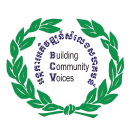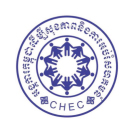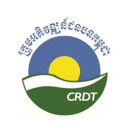The Challenge of Living with Disability in Rural Cambodia: A Study of Mobility Impaired People in the Social Setting of Prey Veng District, Prey Veng Province, March 2006
In February 2006 the World Bank completed a poverty assessment for the Consultative Group Meeting. The assessment is a high quality report that describes poverty trends over the past decade and examines the nature of poverty in great detail. The report similarly explores the consequences of poverty for specific population groups such as women, ethnic minorities, and the urban poor. While no one study can be expected to capture all the dimensions of poverty, one conspicuous omission in the assessment is the lack of reference to the special needs and challenges of persons with disability.
A recent UK Department for International Development Agency (DFID) study entitled Poverty Reduction and Development in Cambodia: Enabling Disabled People to Play a Role maintains that the “physical visibility of disabled people in Cambodia, along with the international focus on landmines, has resulted in a conflation of visibility with inclusion.” The research contends that most disabled people in Cambodia are among the very poorest in the country and have fewer opportunities to escape poverty than the non disabled poor. The study urges policy makers to build greater awareness and understanding of disability in Cambodia and its dynamic relationship with poverty. In conclusion, the report argues that Cambodia’s progress toward poverty reduction will be constrained unless efforts are made to engage the disability sector with mainstream development and to remove the barriers impeding the full participation of disabled persons.
Veterans International (VI) is one of five international organizations that operate physical rehabilitation centers in Cambodia. The VI center in Prey Veng was established in 1995 and serves mobility impaired people from the provinces of Prey Veng and Svay Rieng. Given the proximity of Prey Veng district to the VI center, this site was chosen as a best-case scenario for the study of the challenges confronting people living with disability in rural Cambodia. Surely, situations of disabled people in rural areas without access to physical rehabilitation services would be much more severe.

































